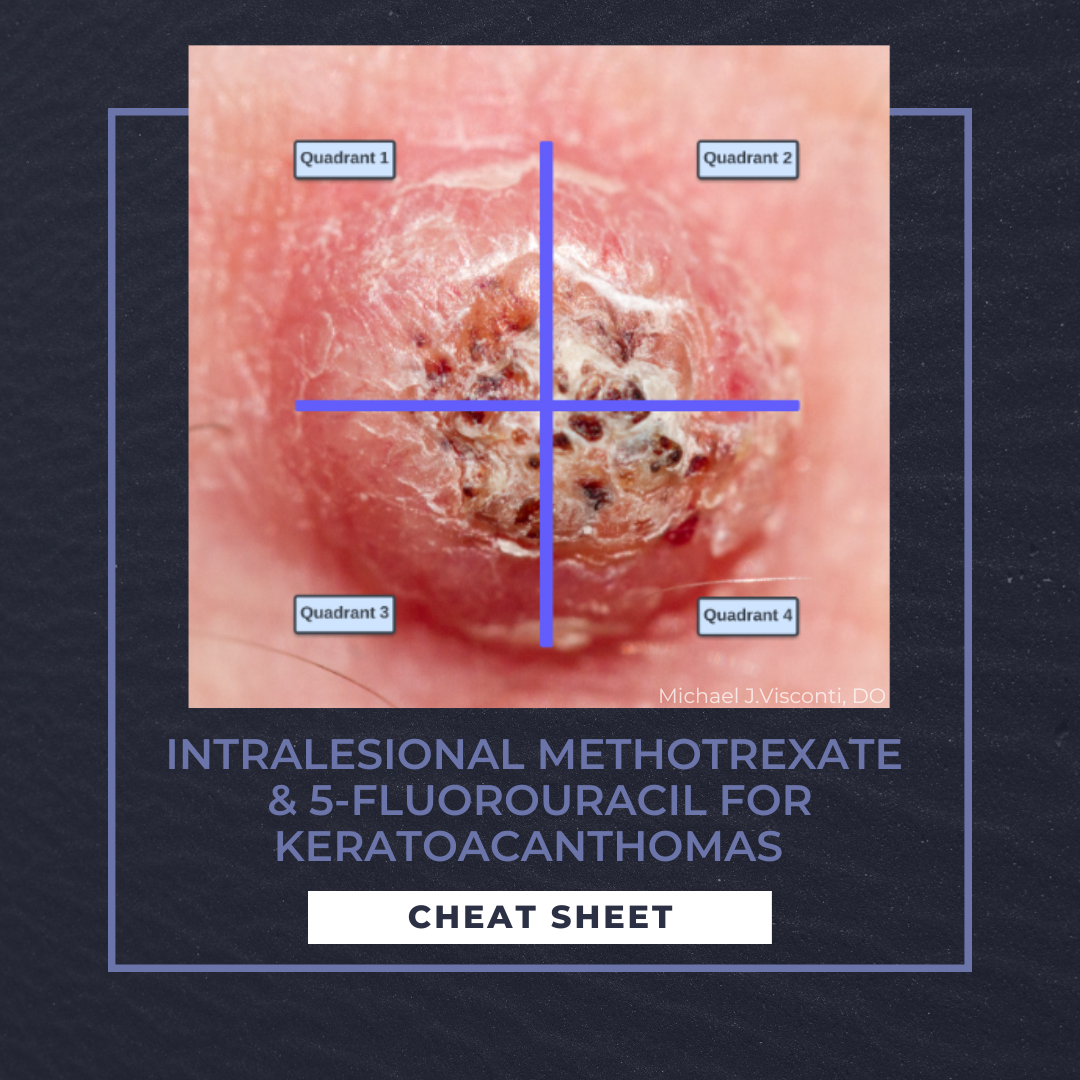Intralesional Therapy for Patients with Cutaneous Malignancies
 Don’t forget about intralesional therapy as a treatment option for cutaneous malignancies, including non-melanoma and melanoma skin cancers, says Dr. Vishal A. Patel, director of cutaneous oncology at the GW Cancer Center. Next Steps in Derm, in partnership with ODAC Dermatology, Aesthetic & Surgical Conference, interviewed Dr. Patel, who shared in which patients intralesional therapy may be …
Don’t forget about intralesional therapy as a treatment option for cutaneous malignancies, including non-melanoma and melanoma skin cancers, says Dr. Vishal A. Patel, director of cutaneous oncology at the GW Cancer Center. Next Steps in Derm, in partnership with ODAC Dermatology, Aesthetic & Surgical Conference, interviewed Dr. Patel, who shared in which patients intralesional therapy may be …
 Don’t forget about intralesional therapy as a treatment option for cutaneous malignancies, including non-melanoma and melanoma skin cancers, says Dr. Vishal A. Patel, director of cutaneous oncology at the GW Cancer Center. Next Steps in Derm, in partnership with ODAC Dermatology, Aesthetic & Surgical Conference, interviewed Dr. Patel, who shared in which patients intralesional therapy may be …
Don’t forget about intralesional therapy as a treatment option for cutaneous malignancies, including non-melanoma and melanoma skin cancers, says Dr. Vishal A. Patel, director of cutaneous oncology at the GW Cancer Center. Next Steps in Derm, in partnership with ODAC Dermatology, Aesthetic & Surgical Conference, interviewed Dr. Patel, who shared in which patients intralesional therapy may be … Continue reading "Intralesional Therapy for Patients with Cutaneous Malignancies"


 Welcome to the December 2023 issue of the Journal of Drugs in Dermatology (JDD), where cutting-edge research and advancements in the field of dermatology take center stage. This issue brings together a diverse array of original articles, case reports, brief communications, and letters to the editor and delves into the latest developments, therapeutic breakthroughs, and cl …
Welcome to the December 2023 issue of the Journal of Drugs in Dermatology (JDD), where cutting-edge research and advancements in the field of dermatology take center stage. This issue brings together a diverse array of original articles, case reports, brief communications, and letters to the editor and delves into the latest developments, therapeutic breakthroughs, and cl …  JDD authors Mihir Shah MD, Jenna Wald MD, and C. William Hanke MD MPH present a case of a patient with eruptive squamous cell carcinomas following treatment with Fludarabine to highlight not only the risk of cSCC in CLL patients and the increased risk for atypical cutaneous malignancies after treatment with systemic therapies such as fludarabine, but also to discuss treatment options for this …
JDD authors Mihir Shah MD, Jenna Wald MD, and C. William Hanke MD MPH present a case of a patient with eruptive squamous cell carcinomas following treatment with Fludarabine to highlight not only the risk of cSCC in CLL patients and the increased risk for atypical cutaneous malignancies after treatment with systemic therapies such as fludarabine, but also to discuss treatment options for this …  Next Steps in Derm, in partnership with Skin of Color Update, interviewed Dr. Eva Kerby, assistant professor of clinical dermatology at Weill Cornell Medical College. Dr. Kerby shares her preferred medical treatment options for keloids, and why it’s important to set treatment expectations with patients. Watch as Dr. Kerby shares tips for good injection technique and how to treat larger, nodul …
Next Steps in Derm, in partnership with Skin of Color Update, interviewed Dr. Eva Kerby, assistant professor of clinical dermatology at Weill Cornell Medical College. Dr. Kerby shares her preferred medical treatment options for keloids, and why it’s important to set treatment expectations with patients. Watch as Dr. Kerby shares tips for good injection technique and how to treat larger, nodul …  Keratoacanthomas are a low-grade, well-differentiated variant of squamous cell carcinoma. Characteristically, their abrupt-onset and crateriform microscopic findings assist with their differentiation from more aggressive squamous cell carcinoma. While surgical treatment remains a viable and appropriate option for their management, clinical scenarios (described below) may portend to better outcomes …
Keratoacanthomas are a low-grade, well-differentiated variant of squamous cell carcinoma. Characteristically, their abrupt-onset and crateriform microscopic findings assist with their differentiation from more aggressive squamous cell carcinoma. While surgical treatment remains a viable and appropriate option for their management, clinical scenarios (described below) may portend to better outcomes …